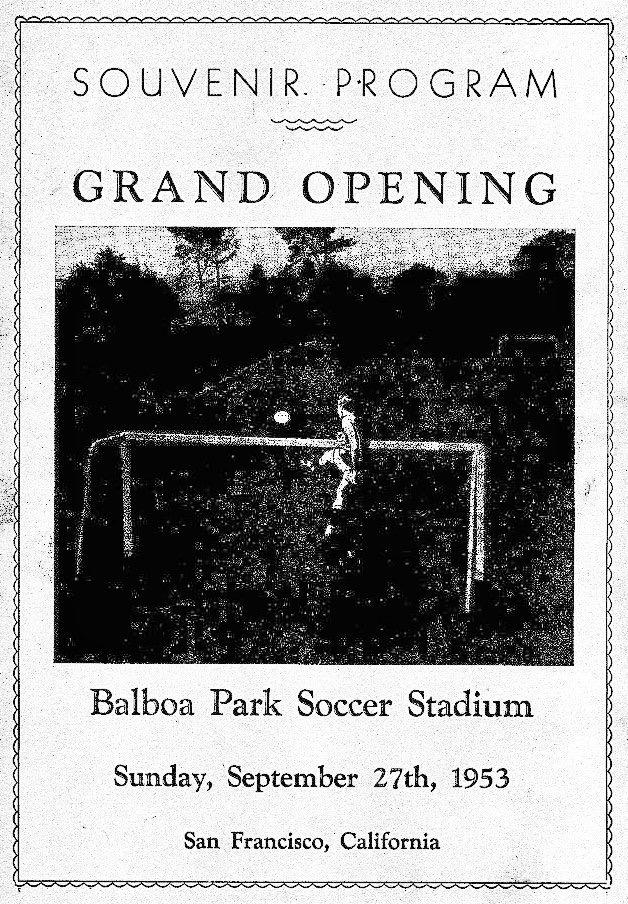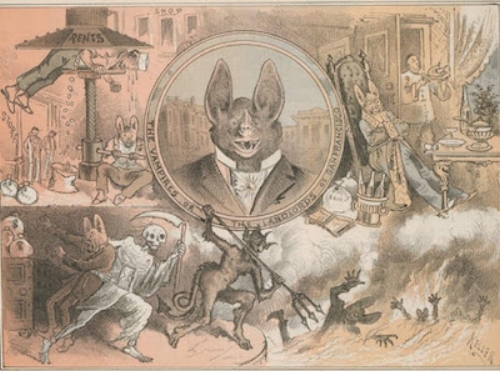Matthew J. Boxer: The Story of Mercury AC and Boxer Stadium at Balboa Park (SF), 1917 -1992
For most of Europe, the Great War ended in 1918, but the after effect carried on for years—this upheaval in social and economic stability caused individuals and families from all over Europe to find their way to the United States looking for a fresh start. For US cities, this meant an influx of immigrants and with them, their cultures and heritage. San Francisco was no exception, and while soccer had been established as early as the 1890s in the Bay Area, this wave of immigration brought an injection of enthusiasm and talented young players. By the mid-1920s The SFSFL (San Francisco Soccer Football League), founded in 1902, had so many new players that they had to restructure the league into divisions with promotion and relegation to accommodate all the clubs.
New teams like Viking AC, Teutonia, Rovers, and Mercury AC mixed it up with the established clubs like Union Iron Works, Olympic Club, Thistle FC and Vampires. It was in 1923 that one of these new clubs, Mercury AC, was founded by three Russian immigrants; Alex Belely, Fred Garbachoff, and Gene Sarabun, who left Europe during the Bolshevik uprising and ensuing Russian Civil War. That same year, 5,600 miles away in Irkutsk, Siberia, Matthew Jacob Boxer was being spirited away from his home—first by ox-cart, then by foot and finally by train to escape the Russian Civil War, which had finally caught up to the region. The “Reds,” who were the uprising minority had taken it upon themselves to shoot anyone on sight who they felt were “whites.” Typically, the whites would be considered the officers, bourgeoisie, and obvious anti-Bolshevik political groups but sometimes it was also just groups who felt the reds were too drastic.
Advert in local paper for Mercury AC’s next match against Olympic Club (CSU newspaper Archives)
Matthew’s parents, Jacob Paul Boxer and Hannah Abramovna Granitsky, were targets of the reds and were forced to leave their home with only the clothes on their backs. It took 9 months for 10-year-old Matt and his parents to arrive in Shanghai, and to the best of our knowledge, he lived there for nearly 7 years before heading to San Francisco, on board the vessel Shanyu Maru, in 1930. Matthew likely settled into life in The City, found employment and made friends with other immigrants and refugees playing soccer in the various places it was available. Places like Old Central Park at 8th & Market, Tobin Field at 12th & Mission, USF Field on Parker & Turk or Memorial Field on Van Ness and Hayes Street. Sometimes a team would have to take a ferry across the bay to catch a match in Oakland or even in Alameda. In 1932, Boxer joined up with Mercury AC, which was very likely the neighborhood club for him—its imaginable that when his family arrived from Russia, by way of China, they sought out people like themselves and Mercury AC were very well supported by the Russian community of San Francisco.
Multi-Purpose Fields off Van Ness (Photo: SFSFL Social Media)
Mercury AC and Matthew J Boxer became inexorably linked—one was synonymous to the other and that would go on for over a half-century. During this time, Mercury was the longest-running side in San Francisco to operate under the same name; they became a powerhouse due to the financial support from the Russian community. In just his second year with the club, they swept through the second division and earned promotion to the first in San Francisco. Just a couple years later, he met his sweetheart Marjorie C. Teffault, and on July 15, 1939 he married her. Matt played a few more years for the club, during which time they were always competing for the top but never won it—in the early 1940s, he quit playing, graduated from Heald Business School, and took up managing both Mercury AC as well as his own small appliance shop in the city.
Matthew Boxer (front row, suit and tie, hand on the cup) and his SFSFL Championship winning team of 1947-48 (Photo: SFSFL Social Media)
Early on, Boxer built the team around young players and encouraged established players to take on the role of leaders and on the pitch trainers. Guys like Fred Albright, Otto Krawets, Louis Silber, and Carl Wolters helped Mercury AC earn their first SFSFL title in 1947-48. Things were great, that same year his wife Marjorie gave birth to his son Perry Matthew Boxer. Thanks to the ongoing support from their tightly-knit community, Boxer and Mercury were able to drum up finances to keep the club operating in the black; holding fundraisers at their Mercury Hall Clubhouse. They won the league again in 1955-56 and this time on a beautiful field, which would eventually have his name on it, at Balboa Park.
Grand Opening Program for Balboa Park Soccer Stadium (SFSFL Social Media)
From the moment he arrived in San Francisco, Boxer saw that the playing conditions for the league were poor and inconsistent from location to location. Additionally, the sport was growing in massive popularity outside of the city, in places like Sacramento, San Jose and even in Southern California, it would be great to have a facility which they could call home and one that met the standards high enough to host state tournaments or even international friendlies. Matthew became an advocate for a soccer specific stadium in San Francisco and helped push for just such a building at 166 Havelock Street. In September of 1953 the Balboa Park Soccer Stadium opened and concrete bleachers were added after $150,000 Proposition G passed just a couple months later; likely he had a hand in that too. As time would go by, Matthew Boxer would become well-known for his ability to advocate for his sport and help get projects underway.
Advert in local paper for an international friendly between Swedish club AIK Solna vs San Francisco’s Best XI (CSU Newspaper Archives)
By the end of the 1950s, Boxer had been appointed President of SFFA (San Francisco Football Association), CSAN (California Soccer Association North) and even selected as an administrator for the USSF (United States Soccer Federation); sources differ between “Junior Soccer Commissioner” or simply “Vice-President.” Whichever title it was, Matt had earned promotion after promotion in the world of US Soccer and was duly inducted in the US Soccer Hall of Fame in 1961, he was 44 years old. He still worked for Mercury as well, as the owner and operator of the club at this point; unfortunately, by the end of the 1960s and into the 70s, the ethnic community began to blend into the diverse fabric of the city. Less talented young players were available, maybe more of them pursued American Football, which was fast becoming king, baseball or even local basketball programs might have attracted the youth players. The financial support also waned and in 1980 a decline was painfully obvious.
Matthew Boxer serving as an administrator welcomes players and dignitaries to Balboa Park Soccer Stadium (Photo: OpenSFHistory.org)
With a lack of investment and talent, Mercury AC fell through to the bottom of the second division and by the end of the 1984-85 season, they found themselves relegated to the third division. It was at this point that they packed it up, and the club ceased operations. Matt wasn’t ready to quit his career in management though; that same year, he ran for and won the office of Mayor of Millbrae, California, which was about 12 miles south of San Francisco. He and Marjorie had been raising their family in the town of about 20,000 and he was already involved in the community as president of the Lion’s Club. He served in this capacity for just a couple of years but was still connected to the league too.
1991 should have been a year of celebration, San Francisco’s department of Recreation and Parks renamed the Balboa Park Soccer Stadium in his honor; tragically though, his son Perry died that same year at just 42 years-old. No more than a year later, Matthew J Boxer passed away in 1992—he was 75. Marjorie passed away in 2003 and they were survived by their daughters Paula and Pamela and 7 grandchildren. His legacy endures at Matthew J Boxer Soccer Stadium in Balboa Park, which continues to be the spiritual home of SFSFL and most soccer in the city—some city sides like Olympic Club and SF Vikings still play their soccer there. Some former SFSFL teams have moved up to larger, national leagues, like El Farolito and East Bay/Oakland Stompers (formerly San Francisco Stompers) but still play league matches at the stadium from time-to-time.
The Department of Recreation and Parks manages Boxer Stadium (Photo: SF Dept Recreation and Parks)
After over a century of soccer in San Francisco, the future looks as bright as ever, and it very well may involve this legendary soccer specific stadium. The United States Soccer Federation has won the bid to host the 2026 FIFA World Cup and San Francisco is looking to renovate one or two sites to host a visiting national team or two and provide training grounds. The historic Kezar Stadium, a century-old American Football stadium and Boxer Stadium are at the top of the list for high-end upgrades. The neighborhood surrounding Kezar has voiced opposition due to concerns over parking and noise issues. However, Boxer is well-regarded because its infrastructure and layout has always been soccer-specific—less work will have to be done to create a modern soccer complex in the heart of The City. I’m sure if Matthew was alive, he’d be in attendance to any committee he could to advocate for this to happen, let’s hope the officials San Francisco has now have the same passion for the sport and the city that Boxer had.
- Joshua Duder
The rolling hills and iconic neighborhoods of San Francisco can be seen from the main stands of Boxer Stadium (Photo: SFSFL Social Media)
Sources:
https://www.sfgate.com/bayarea/article/Soccer-fever-in-S-F-is-not-new-outbreak-2830188.php
https://www.sfgate.com/sports/slideshow/Bay-Area-sports-landmarks-178600.php
https://www.findagrave.com/memorial/86465663/matthew-jacob-boxer
http://www.sfexaminer.com/district-supervisor-hopes-renovate-boxer-stadium-time-2026-world-cup/




















